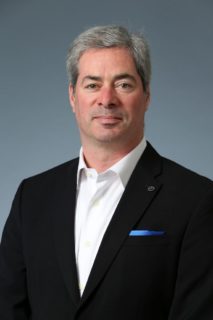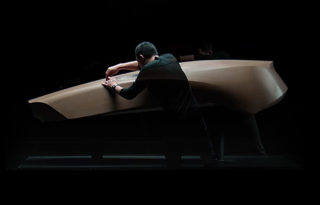Aside from buying a house, purchasing a new car is the single-highest expense a consumer will ever make.
Mazda is trying to make that experience as enjoyable as possible—all while making sure that car buyers are getting into their line of vehicles for entirely the right reasons.
The first step in the process for the 97-year-old manufacturer was acknowledging that Mazda is not for everybody. The second was to start sharing a dynamic story around design and driving. The brand’s repositioned efforts are fueling a marketing strategy that aims at building on their less than 2 percent share of global auto sales.
A focal point in their quest to creating separation between them and mass-market brands—and growing the right way—is by transforming from company-centric marketing to consumer-centric marketing, and being more of an experience provider as they embark on acquiring 15 percent of the 17 million new-car buyers.
Their “Driving Matters” dubbed campaigns stress the stories behind design to draw in new buyers, all while reshaping the brand’s perception among consumers.
Russell Wager, Mazda’s vice president of marketing, oversees all aspects of US marketing for the company, which includes electronic advertising, social media, brand experience and auto shows, among other verticals. The 20-year auto industry marketing veteran joined AListDaily to share the car company’s refined approached to consumer engagement.

How is Mazda breaking through traditional marketing boundaries? Can you comment on your digital, social, and influencer marketing efforts?
Overall, we’re trying to make sure we have dialogue as opposed to one-way conversations with our customers. We’re seeing a little bit more engagement both on social channels, and on our ride-and-drive programs around the country. In addition to the press and journalists who cover the industry, we’re now inviting loyal owners to come to our events to hear from our engineers, designers and research and development teams first-hand about the latest in Mazda’s products, and the stories behind them. We are seeing huge engagement, not only from the people that are attending, but from their friends and followers, too, on how we’re giving them a chance for one-to-one dialogues with our teams.
What is Mazda’s marketing strategy with millennials and digital natives?
We’re definitely about driving pleasure. People who purchase Mazda are not the ones going from point A to point B. They are going from point A to point C to point B because driving in a Mazda reenergizes and rejuvenates them. Whether it’s millennials, or anyone else, there is big room in each demographic. We’re just being core to our messaging in what we build, design and engineer in every single one of our cars. At the same time, we are starting to show that our vehicles are for people that are willing to pay a little bit more to get the right technology and design. In our studies, we’re now seeing that millennials, and all the way up to the baby boomers, that education, income and loyalty repurchase are all trending upward. We’re still behind the industry average, but it’s made significant growth from under 30 percent to an almost 40 percent loyalty rate in just the last three years.
How is Mazda repositioning the company as a brand of the future?
Our overall global strategy is very simple—we want to put smiles on people’s faces. At the end of the day, we make vehicles that will hopefully contribute to that. But everything we do is definitely trying to find ways of enjoyment in the car, enabling people to feel safe and secure, delivering experiences, like at SXSW earlier this year. All of that is what we’re trying to do as we ultimately move toward our seventh generation product, which will be coming here in a few years.
Why is your continued sponsorship of SXSW such a significant part of your yearly marketing strategy?
When we look at who our target audience is, it’s highly educated, affluent people who are definitely looking to be on the cutting edge of film, music and technology. SXSW serves to be a logical partnership for us over the last years. The results in engagement on social and on-site activations have far exceeded what we’ve set out to do. Besides getting exposure, we want to simplify people’s lives with our Mazda Express service, which is one thing we’ve seen grow. We had four-to-five thousand people use it the first year. Last year we had 11,000. This year, our pre-registration was at 5,000. It’s a mutual benefit because we get people to experience the ride of a Mazda, which is great. We also shifted our strategy from telling our Mazda story at our Empire Studio, as opposed to the Austin Convention Center.
How are you using social data to better connect with consumers?
Unfortunately, we were a little late to the game, so in July we deployed test cases to see if it’s working. We already have started to see a decreased range between 50 and 75 percent on responses based on modeling for the right targets. As much as we’d like everyone to purchase a Mazda, Mazda is not for everybody. Before, we had a little too much of what I’ll call a “shotgun” approach. We’re now seeing it be more “rifle-like” because it’s getting more refined each and every time we deploy campaigns. Data is a big effort. We have the data, but some people have purchased Mazda vehicles because it was a great deal at the time. Some people may have purchased it because of the style or technology. We’re now finding which one of these people are more likely to repurchase and stay within the Mazda family as opposed to being a one-and-done. It’s about understanding and recognizing if customers might be purchasing Mazda for the wrong reasons we stand for. So we’re refining our messaging to make sure everyone knows what they’re buying into.
What are the insights and data that influence your marketing strategy? Is there a new product or service that you think will influence decisions?
We use analytics on a regular basis for our media planning. We utilize analytics that helps us look at over 1,900 different input variables, like media spend, inventories, competitive spend, weather, economy, housing, and the like. All of these things help us determine media mix elements from two perspectives. One, what will help us drive a retail sale? And two, what will help increase favorable opinion of Mazda? This helps us decide where we put our funds into markets—like national versus local.

What emerging trends and platforms are you looking to explore in order to innovate the Mazda brand?
Everyone is saying how digital is becoming more prevalent—and that’s true. I think it’s the combination of data and digital to deliver one-to-one experiences. More than 40 percent of the budget today is in digital. At the end of the day, there is enough information about people out there that you should be able to customize dialogue, conversation or communication with them, whether you’re online or offline. It needs to be personalized to them. That’s ultimately to where I think we’ll get to. It’s increasingly happening on social channels. That will allow for a customer to get a little more in-depth knowledge than just a broad, mass swath of communication. They actually get the things that are relevant to them.
What is one element of your marketing that you are trying to improve on?
We want to tell more of our design, engineering and heritage stories. It’s our overall challenge as we move forward with our communications into 2017. On the surface, it sounds like it’s easy to do. Like, “just do it!” It’s about telling people of the background of Mazda, and its roots in Hiroshima, Japan, and the company’s never-give-up attitude. We want people to understand that designers are crafting creative works of art. The same goes from a technology standpoint. We try to look at tech that will help customers in their everyday lives. That is the story that we are going to tell.
Follow Manouk Akopyan on Twitter @Manouk_Akopyan

